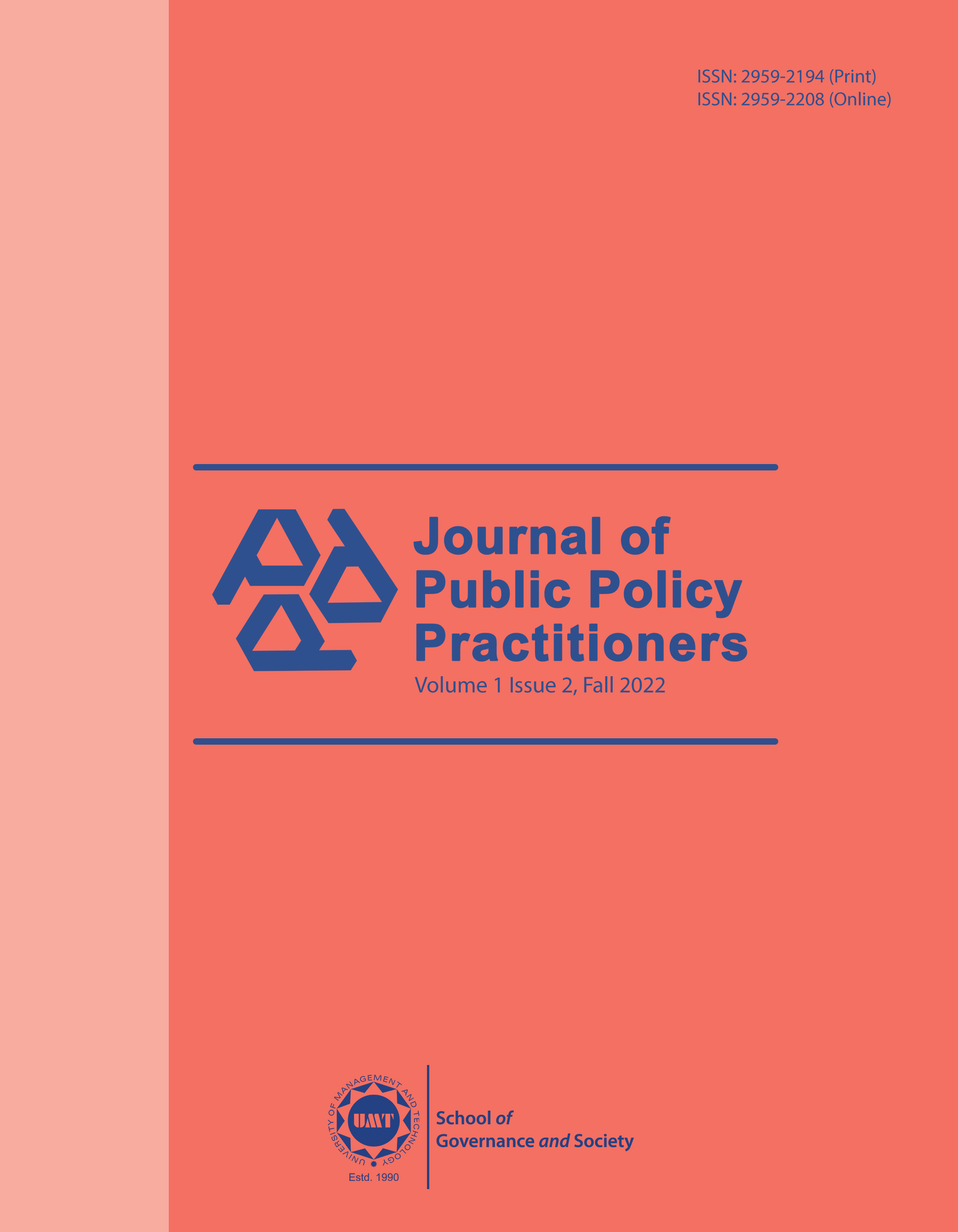Critical review of School Health & Nutrition Program for achieving Advance Preventive Healthcare for Children in Punjab
Abstract
 Abstract Views: 59
Abstract Views: 59
The School Health and Nutrition (SHN) program was launched in year 2007-08 in different districts of Punjab, Pakistan. As the core of this program, School Health and Nutrition Supervisors (SHNS) were hired as the main agents to implement the program’s objectives. These SHNS were appointed at Basic Health Units (BHUs) and tasked with the objectives to screen the children in public schools, identify sick children, ensure their medical treatment, referrals, and follow-ups along with conducting health education sessions in their respective schools and communities. The current paper attempted to assess the performance of this program and suggested succinct measures to reform it in order to achieve its desired objectives. It included the analysis of the reasons and bottlenecks due to which the highlighted anticipated outcomes of this program could not be fully realized. After analyzing the qualitative and quantitative shortcomings in the design and implementation of this program, the current article recommends workable solutions based on strategic revisions in both the clinical as well as the procedural part of the program.
Downloads
References
Alderman, H., Behrman, J. R., Khan, S., Ross, D. R., & Sabot, R. (1997). The income gap in cognitive skills in rural Pakistan. Economic Development and Cultural Change, 46(1), 97–122. https://doi.org/10.1086/452323
Berkley, S., & Jamisonm, D. (1990). A conference on the health of school age children. New York, United Nations Development Programme and Rockefeller Foundation.
Bobonis, G., Miguel, E., Sharma, C. (2004). Iron deficiency anemia and school participation (University of California at Berkeley, Working paper). https://ideas.repec.org/p/feb/natura/00219.html
Currie, C., Levin, K. A., Kirby, J. L. M., Currie, D. B., van der Sluijs, W., & Inchley, J. C. (2011). Health behaviour in School-aged children. World Health Organization. https://research-repository.st-andrews.ac.uk/handle/10023/2076
Health Information & Service Delivery Unit (HISDU). (2017). School health and nutrition program application. https://play.google.com/store/apps/details?id=com.pitb.healthandnutrition&hl=en_AU&gl=US
Meester, H. J., & Tienstra, M. L. (2012). Evaluation of the European school fruit scheme [2012]. Europese Unie. https://agris.fao.org/agris-search/search.do?recordID=NL2020013168
Michie, S., Richardson, M., Johnston, M., Abraham, C., Francis, J., Hardeman, W., Eccles, M. P., James Cane, J., & Wood, C. E. (2013). The behavior change technique taxonomy (v1) of 93 hierarchically clustered techniques: building an international consensus for the reporting of behavior change interventions. Annals of behavioral medicine, 46(1), 81–95. https://doi.org/10.1007/s12160-013-9486-6
National Association of School Nurses. (n.d.). Coronavirus disease 2019 resources. Retrieved on June 7, 2020, from https://www.nasn.org/nasn/nasn-resources/practice-topics/covid19
National Association of School Psychologists. (n.d.). Helping children cope with changes resulting from COVID-19. Retrieved on June 7, 2020, from https://higherlogicdownload.s3.amazonaws.com/NASN/3870c72d-fff9-4ed7-833f-215de278d256/UploadedImages/PDFs/03252020_NASP_NASN_COVID-19_parent_handout.pdf
Pakistan Bureau of Statistics. (2017). Population census. https://www.pbs.gov.pk/content/population-census
School Health and Nutrition Program. (n.d.). https://www.nd.gov/dpi/districtsschools/child-nutrition-and-food-distribution/school-nutrition-program
United Nations International Children's Emergency Fund (UNICEF). (2018). National Nutrition Survey 2018-Key Findings Report. https://www.unicef.org/pakistan/media/1951/file/Final%20Key%20Findings%20Report%202019.pdf
Wilson, S., Hastings, C., Morris, A., Ramia, G., & Mitchell, E. (2022). International students on the edge: The precarious impacts of financial stress. Journal of Sociology, 0(0). https://doi.org/10.1177/14407833221084756
World Health Organization. (2009, December 1). Global health risks: mortality and burden of disease attributable to selected major risks. https://reliefweb.int/report/world/global-health-risks-mortality-and-burden-disease-attributable-selected-major-risks
World Health Organization. (2013, November 14). Global action plan for the prevention and control of NCDs 2013–2020. https://www.who.int/publications/i/item/9789241506236







